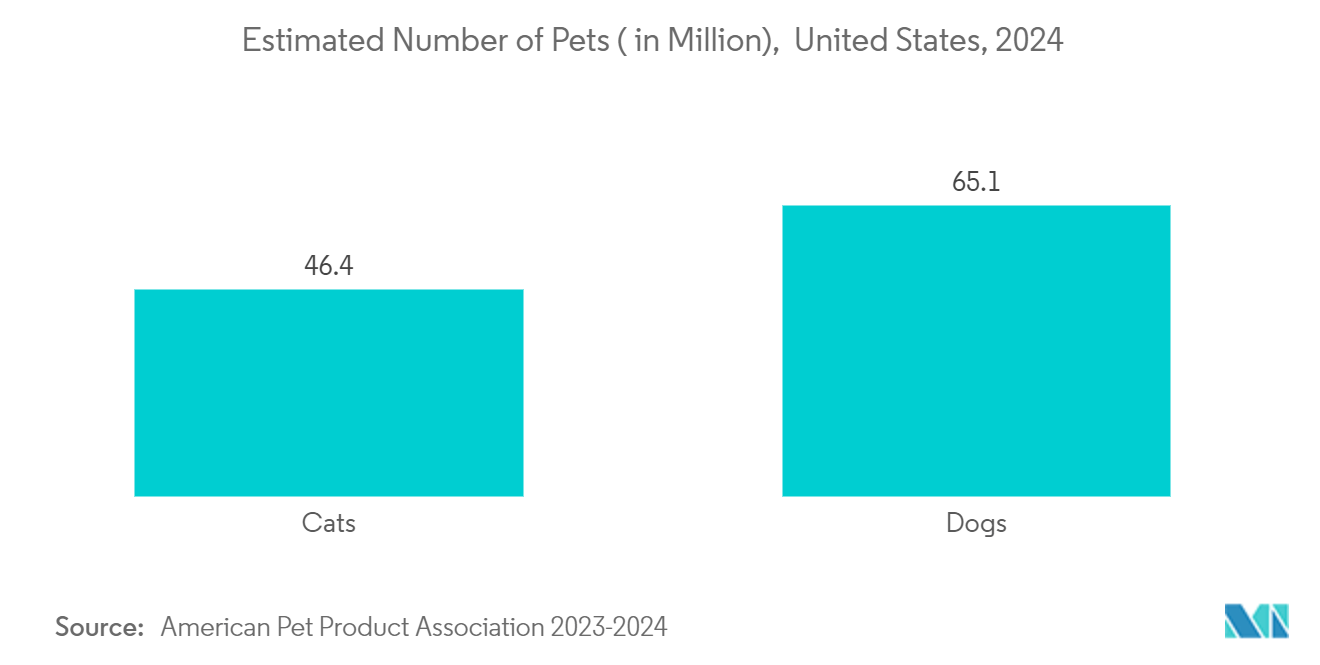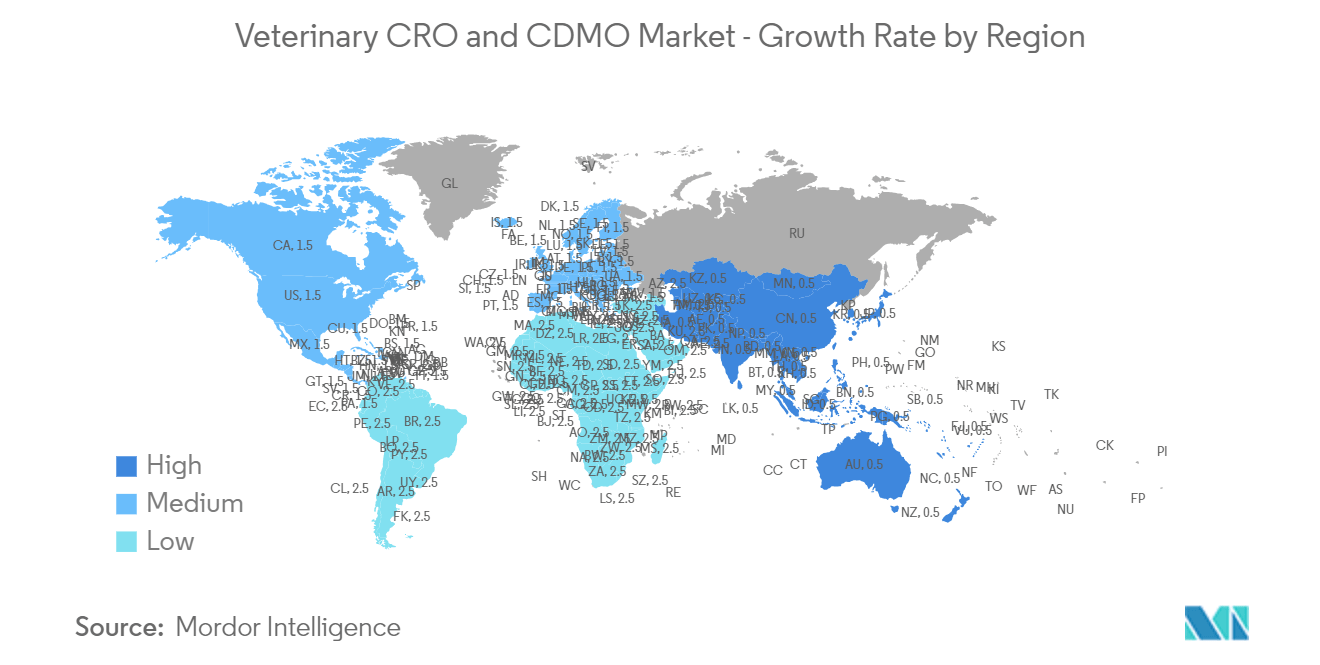Market Trends of Veterinary CRO And CDMO Industry
The Companion Animal Segment is Expected to Hold a Significant Market Share Between 2024 and 2029
The companion animal segment is poised to command a significant portion of the veterinary CRO and CDMO market, driven by the heightened pet adoption in developed regions and the resulting surge in pet owners' willingness to invest in their furry friends' healthcare. For instance, according to estimates from the European Pet Food Industry: Facts and Figures 2022 (FEDIAF), there were around 10.6 million dogs and 15.2 million cats in Germany in 2022.
Similarly, as of February 2022, according to the updates by the Canadian Animal Health Institute (CAHI) shared the results of its 2022 Pet Population Survey, more than half (60%) of Canadian households had at least one dog or cat in 2022. The data also showed an increase in the pet population. The dog population climbed to 7.9 million in 2022, and the cat population increased to 8.5 million in 2022. Hence, more pets mean more need for healthcare products like vaccines, medications, and other veterinary drugs. This increased demand drives the need for CDMOs to produce these pharmaceuticals in larger quantities.
The rising incidence of oncology in dogs is anticipated to drive the demand for CDMO services to boost the segment growth. As per the Animal Cancer Foundation 2023, approximately 65 million dogs and 32 million cats were diagnosed with cancer in the United States as of 2022. As the incidence of diseases in companion animals rises, there is a higher demand for effective therapeutic solutions. CDMOs play a crucial role in developing and producing pharmaceuticals and medical products needed to treat these conditions.
Furthermore, strategic collaboration and partnership by the market players for the development of companion animal medicine are expected to contribute to the segment's growth. For instance, in July 2022, Zoetis and Syngene International Limited entered into a 10-year agreement for Syngene to produce the drug substance for Librela (bedinvetmab), an innovative monoclonal antibody for canine osteoarthritis.
Hence, more pets mean a greater need for healthcare products like vaccines, medications, and other veterinary drugs. This increased demand drives the need for CDMOs to produce these pharmaceuticals in larger quantities.

North America is Expected to Hold a Significant Market Share Between 2024 and 2029
North America holds a significant share of the veterinary CRO and CDMO market with a strong presence of key players and increased drug development and veterinary product launch activities in the region. Veterinary clinical trial activities are on the rise in the United States. Additionally, the growing availability of contract organizations in veterinary product development, enhanced manufacturing infrastructure in developed countries, and increasing animal healthcare investments are supporting market growth.
The growing disease burden encourages research and development efforts to discover new and improved treatments. CDMOs contribute to this process by providing the necessary expertise and infrastructure for drug development. For instance, as per the United States Department of Agriculture data on the Highly Pathogenic Avian Influenza in Commercial and Backyard, as of May 27, 2022, around 37.96 million birds were affected by the highly pathogenic avian influenza virus in 2022. This encourages R&D activities and drives the demand for CRO and CDMO services, likely contributing to market growth.
Moreover, a growing number of clinical trials and increasing drug development and research of veterinary medicines are anticipated to propel the market's growth. For instance, in August 2023, Akston Biosciences Corporation announced that it is shifting its focus toward inventing, developing, and manufacturing breakthrough protein therapeutics that will cater to the health needs of companion animals. To achieve this goal, the corporation will leverage its cGMP biologics manufacturing facility in Beverly, Massachusetts, along with Akston’s Ambifect Fc-fusion platform. This platform is designed to support species-specific drug development and will be crucial in bringing these veterinary therapies to market.
Hence, increasing demand for CRO and CDMO services and a growing number of clinical trials are expected to contribute to market growth in North America between 2024 and 2029.


